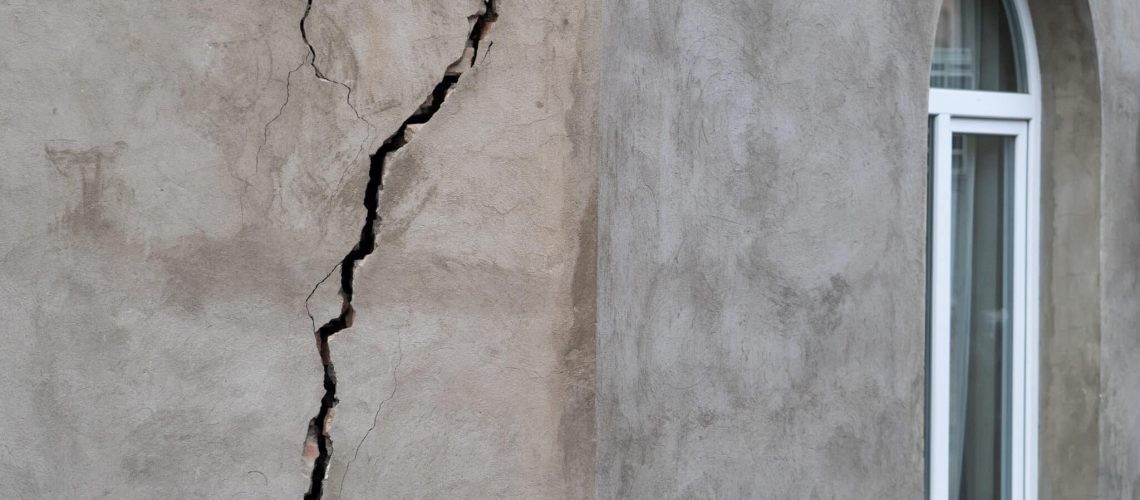Your home’s foundation is the bedrock upon which everything else is built and is the most critical component of every structure. So, it’s crucial to maintain its integrity to ensure the structural stability of your house. One factor that significantly affects the foundation is the weather. Climate variations can lead to foundation cracks, which, if left unchecked, can compromise the entire structure. Understanding the impact of weather on your home’s foundation can help you take preventive measures to protect your investment.
How Weather Affects Foundation Cracks:
Moisture Content: Changes in humidity levels can cause the soil around your home to expand and contract. When the soil expands, it exerts pressure on the foundation walls, leading to cracks. Conversely, during dry periods, the soil contracts, creating gaps around the foundation that can also cause cracking.
Expanding Soil: During periods of high humidity or heavy rainfall, the soil around your foundation can absorb excess moisture, causing it to expand. This expansion can exert pressure on the foundation walls, leading to cracks.
Contracting Soil: Conversely, during dry periods or droughts, the soil can shrink as it loses moisture. This shrinking can create gaps around the foundation, leaving it unsupported and susceptible to cracking.
Freeze-Thaw Cycles: In regions with cold winters, the freeze-thaw cycle can be particularly damaging. When water seeps into cracks in the foundation and freezes, it expands, widening the cracks. As the ice thaws, it leaves behind larger openings, weakening the foundation.
Expansion Of Ice: When water freezes, it expands by about 9%, exerting tremendous pressure on the walls of the foundation. This pressure can cause existing cracks to widen or new cracks to form.
Thawing And Settlement: As the ice thaws, it leaves behind larger gaps in the soil. This can lead to settlement of the foundation as the soil underneath shifts, further compromising its stability.
Heavy Rainfall: Excessive rain can saturate the soil around your home, increasing the pressure on the foundation walls. This can lead to bowing or leaning walls, which are not only unsightly but also indicate serious structural issues.
Hydrostatic Pressure: When the soil around your foundation becomes saturated with water, it exerts hydrostatic pressure on the walls. This pressure can cause them to bow or lean inward, leading to cracks and other structural problems.
Soil Erosion: Heavy rainfall can also cause soil erosion around your foundation. As the soil washes away, it leaves the foundation unsupported and vulnerable to cracking and settling.
Drought: Prolonged droughts can cause the soil to shrink and pull away from the foundation. This can create voids under the foundation, leading to settlement and cracks.
Shrinking Soil: During a drought, the lack of moisture in the soil can cause it to shrink. This shrinkage can create gaps around the foundation, leaving it unsupported and prone to cracking.
Foundation Settlement: As the soil shrinks and pulls away from the foundation, it can cause the foundation to settle unevenly. This uneven settling can lead to cracks in the foundation and other structural issues.
Preventive Measures
Proper Drainage: Ensure that your home has adequate drainage to prevent water from pooling around the foundation. Install gutters, downspouts, and French drains to direct water away from the house.
Gutter Maintenance: Clean your gutters regularly to prevent clogs that can cause water to overflow and pool around the foundation.
Downspout Extensions: Use downspout extensions to direct water at least 5-10 feet away from the foundation to prevent soil erosion and saturation.
Maintain Consistent Moisture Levels: Use a soaker hose to water the soil around your foundation during dry spells to maintain consistent moisture levels. Avoid overwatering, as this can also cause problems.
Soil Moisture Monitoring: Use a moisture meter to monitor the moisture levels in the soil around your foundation. Adjust your watering schedule accordingly to keep the soil stable.
Foundation Inspection: Regularly inspect your foundation for signs of cracking or shifting. Address any issues promptly to prevent them from worsening.
Visual Inspection: Walk around your home regularly to look for cracks, gaps, or signs of settlement in the foundation. Pay attention to doors and windows that are difficult to open or close, as these can also indicate foundation issues.
Professional Inspection: Hire a professional foundation inspector to assess the condition of your foundation at least once a year. They can identify potential issues early on and recommend appropriate repairs.
Early Detection: Early detection of foundation issues can prevent them from worsening and save you money on costly repairs down the road.
Repair Recommendations: A professional foundation inspector can recommend the appropriate repairs based on the type and severity of the damage to ensure the long-term stability of your home.
Conclusion
Weather fluctuations can have a notable impact on your home’s foundation. By grasping how climate changes can influence your foundation, you can implement preemptive steps to safeguard it. Consistent maintenance and prompt repairs can contribute to maintaining the stability and durability of your home.


